Let’s talk mermaid hair! Melissa Lynn Herold has a few tips for us….
Caring for Mermaid Hair
There are few images more iconic than a mermaid combing her hair by the sea. But glamorous swimming makes for unseemly tangles and hair is most fragile when wet. In our quest to learn how to care for mermaid tresses we turned to Melissa Lynn Herold—both the fantasy author behind The Iyarri Chronicles and the herbal alchemist behind NightBlooming.
We’ve talked to Melissa in the past about how she creates plant based dyes to get these enchanting Victorian reds without chemicals or damage. Melissa has feet upon feet of hair stunningly reminiscent of a Waterhouse mermaid, and we had a seaside chat about mermaid hair and just how they (and you!) can keep those tresses so lovely despite the searing sun and crashing sea.
What’s the first rule of mermaid hair?
Be gentle and remember that your hair is most fragile when it’s wet. Water temporarily breaks the bonds that give hair its natural shape and texture, and this, combined with the additional weight of water, causes each strand of hair to become straighter and elongate. Your hair can only stretch so far before it breaks, and wet hair is already weakened and stretched nearer to its breaking point. Don’t worry, though, these bonds reform as your hair dries; you just need a gentler hand until it does.
How can we protect our hair when it’s wet?
Protecting your hair starts before you even get in the water. You’ll want to use an oil-based pre-treatment because anything else will rinse right out as soon as you hit the water. My favorite blends for this have a coconut oil base, because it’s one of the few oils that actually penetrates the hair shaft. Here’s an easy DIY recipe for a pre-swim treatment:
Siren’s Song Swim Oil
– .5 oz Fractionated Coconut Oil
– 1 drop Eucalyptus Essential Oil
– 3 drops Lavender Essential Oil
– 3 drops Bergamot Essential Oil
– 3 drops Rosemary Essential Oil
Blend together and give a good shake before use. If you don’t have the materials handy, Melissa will blend it up for you! She also has a huge array of oils, including ones inspired by her characters in The Iyarri Chronicles. No matter what your fancy, Melissa has an oil for you and will even make you a custom blend.
To oil your hair, place 3 drops between your palms, rub them together, and then smooth them over your hair, starting at the ends and working your way upwards. You’ll need to do this until your hair is softy and shiny, but not oily and clumped together.
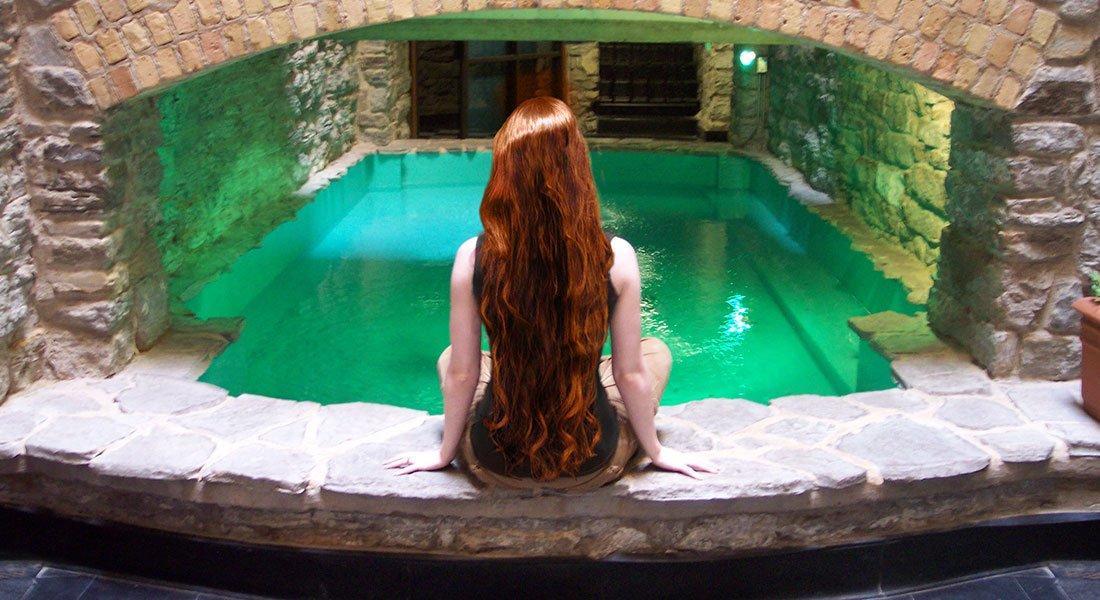
Then put it into a protective style. While long tresses floating about the sea is picturesque, the best way to prevent damaging tangles is to not give them the chance to start. My favorite for this is probably a fishtail braid. It’s simple to do, easy to find tutorials for, and it’s thematically on point.
What happens when you’re done swimming?
Once you get out of the water, it’s important to get any minerals or chemicals (if you were swimming in a pool) off of your hair. First, gently wash your hair with your favorite shampoo, and then follow it up with a chelating rinse. You can make a very simple one of these with apple cider vinegar and your favorite herbal tea. Simply brew up a quarter cup of herbs with 6 cups water and let cool. To this add ¼ cup of apple cider vinegar and stir (or shake!) well. Then pour it through your hair from root to tip. Another great option is Alluvial, which is a natural treatment that pulls minerals off the hair, and can be scented with your choice of essential oils. I’ll admit I prefer it over apple cider vinegar because the lingering vinegar tends to refresh the next time I get my hair wet.
No matter if you do an ACV rinse or Alluvial you’re doing two important things: you’re closing down the cuticle of the hair and you’re restoring the acid mantle of your scalp. This will help you both keep scalp itches away, and help make your hair easier to detangle, which is our next step!

What do we need to detangle after a dip in the sea?
The main thing you need is patience, but some Selkie Herbal Detangler and a wide tooth comb certainly help. Because hair is so fragile when wet, you never want to pull or rip through tangles. You’ll start with just your fingers, and at the ends of your hair. Separate your hair into small sections and gently work through the tangles. If you have Selkie, or another detangler, apply that to either your hair or your fingertips as you work.
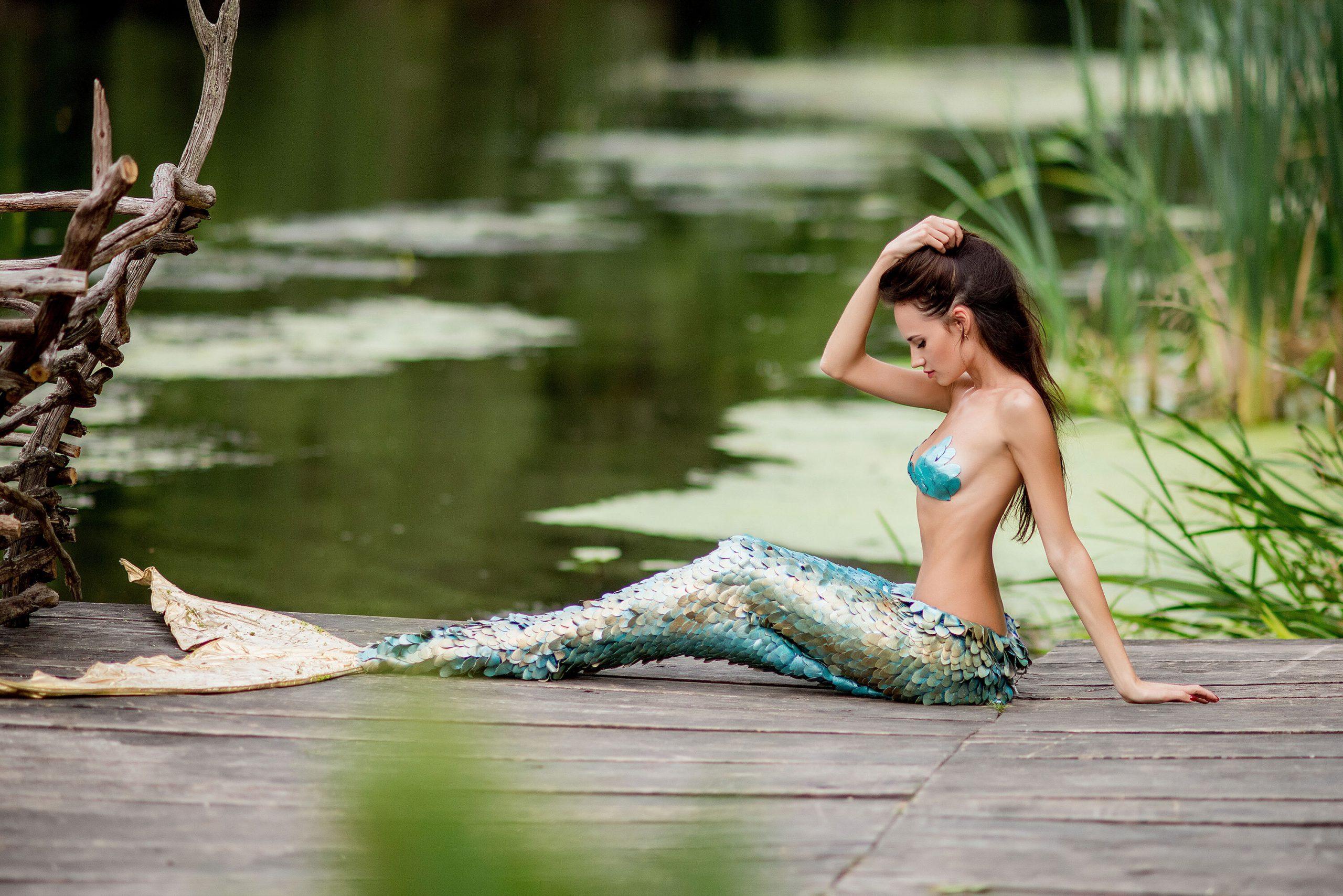
What makes Selkie Herbal Detangler so special?
I suppose the first thing is the smell, it’s entrancing: Crisp sea-spray over alluring sun-basked vanilla and herbs. The second thing is that it’s all natural. Many commercial detanglers are loaded with mineral oil, parabens, glycerin, and silicones that can leave hair looking greasy or build up over time. By contrast, every ingredient in Selkie Herbal Detangler is vegan, hand-blended, and certified organic. Selkie is lightweight and effective while still washing out with even the most gentle of natural cleansing methods. Selkie works for all hair types, and is a great leave in for extra hydration.
I even use it in other recipes because it’s such a great way to pack in a ton of pH balanced ingredients. My two favorites are DIY Nymphéas Toning Mist, and in a DIY Mermaid Face Mask with Selkie, green clay, and Kelp. I have really fussy and sun-sensitive skin, and these are both an extra treat for my face after a day swimming.
One last benefit of Selkie Herbal Detangler is that you refill the glass bottle it comes in, reducing waste and keeping unnecessary packaging out of our seas.
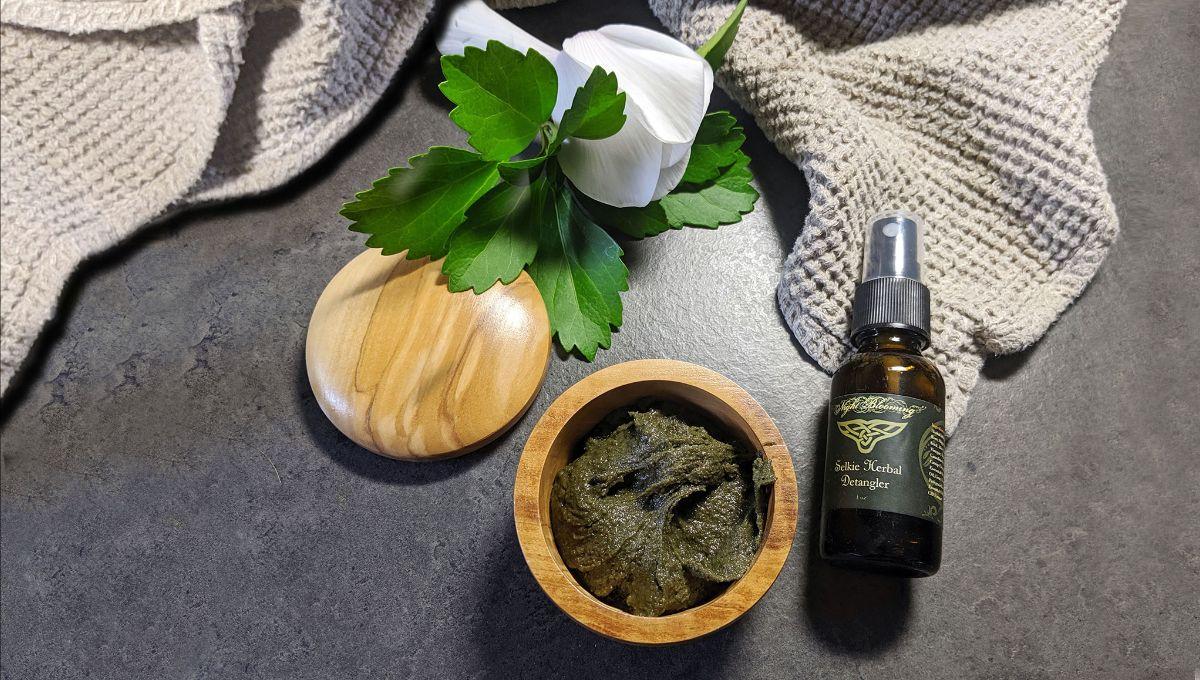
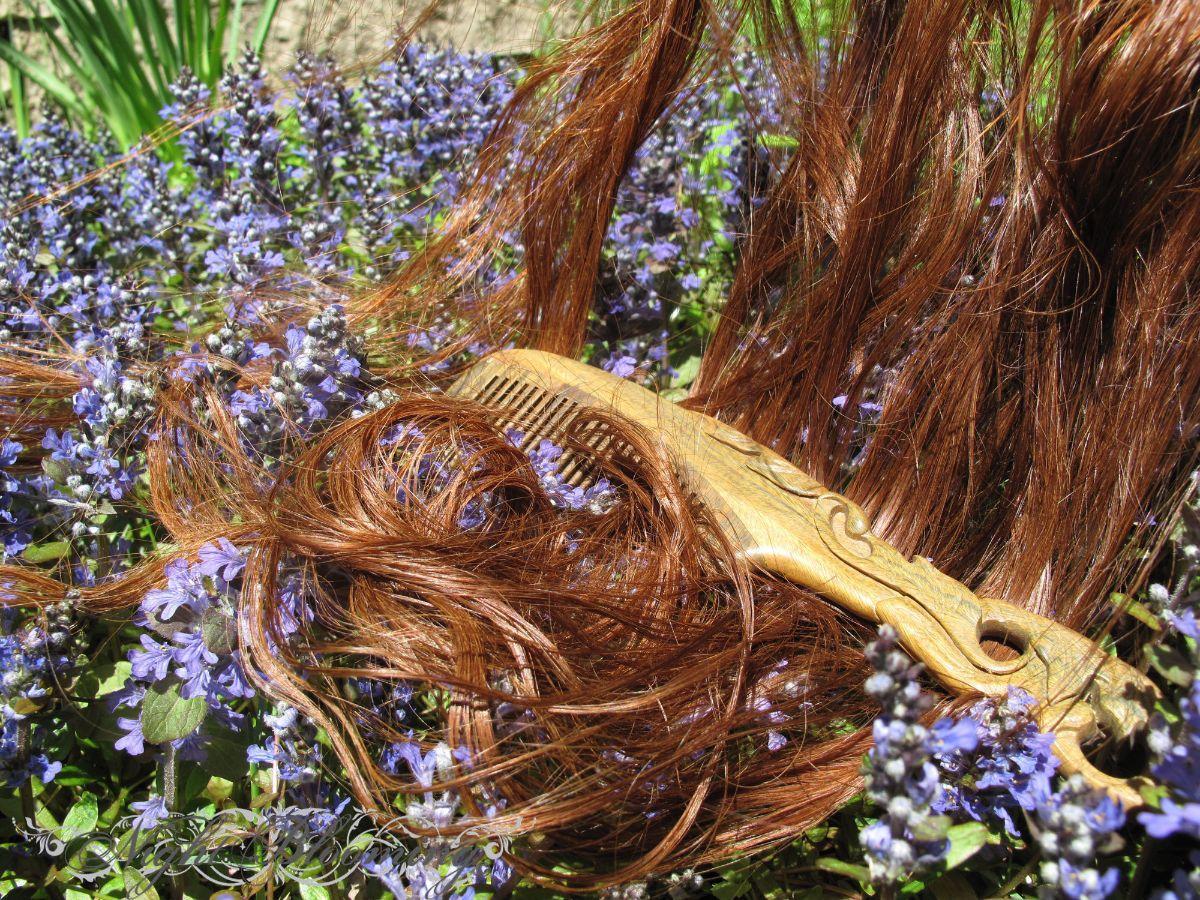
When do we finally get to be the mermaid combing our hair by the ocean?
Now, when your hair is starting to dry and you’ve gotten the worst of the tangles out with your fingers, you can finally reach for that comb. Just like with finger-detangling, you’ll want to work in small sections, starting from the ends and working your way upwards. The ideal comb for this should have wide teeth, without seams. Many plastic combs have a seam that runs around its midline where the two halves of the mold come together, so if your comb has those, you’ll want to gently file those off with a nail file. Otherwise, those sharp, upraised seams will damage your hair, causing it to weaken—just the same way the edge of a pair of scissors curls a ribbon.
My favorite comb (pictured above) is made of Verawood. Wood combs are perfectly fine so long as you dry them off when your done so the water doesn’t damage the wood. Other great materials for combs are bone and horn.
I really hope you’ve enjoyed these long hair mermaid tips and can find a way to work them into your beauty rituals!
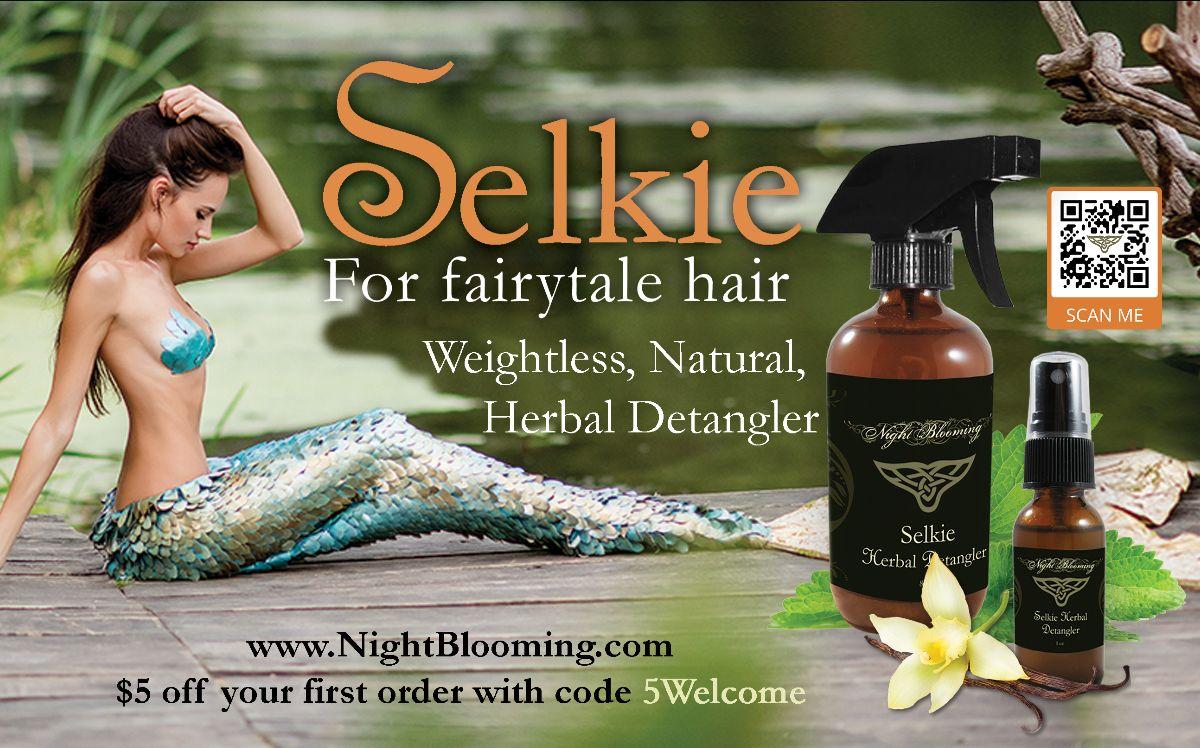
I don’t suppose you have any enchanted gifts for our lovely readers?
Of course I do! I know you’ll be so enamored with Selkie Herbal Detangler and the other things I brew up at NightBlooming that I want you to take $5 off your first order with the code 5Welcome. Just plug it in when you check out!


































